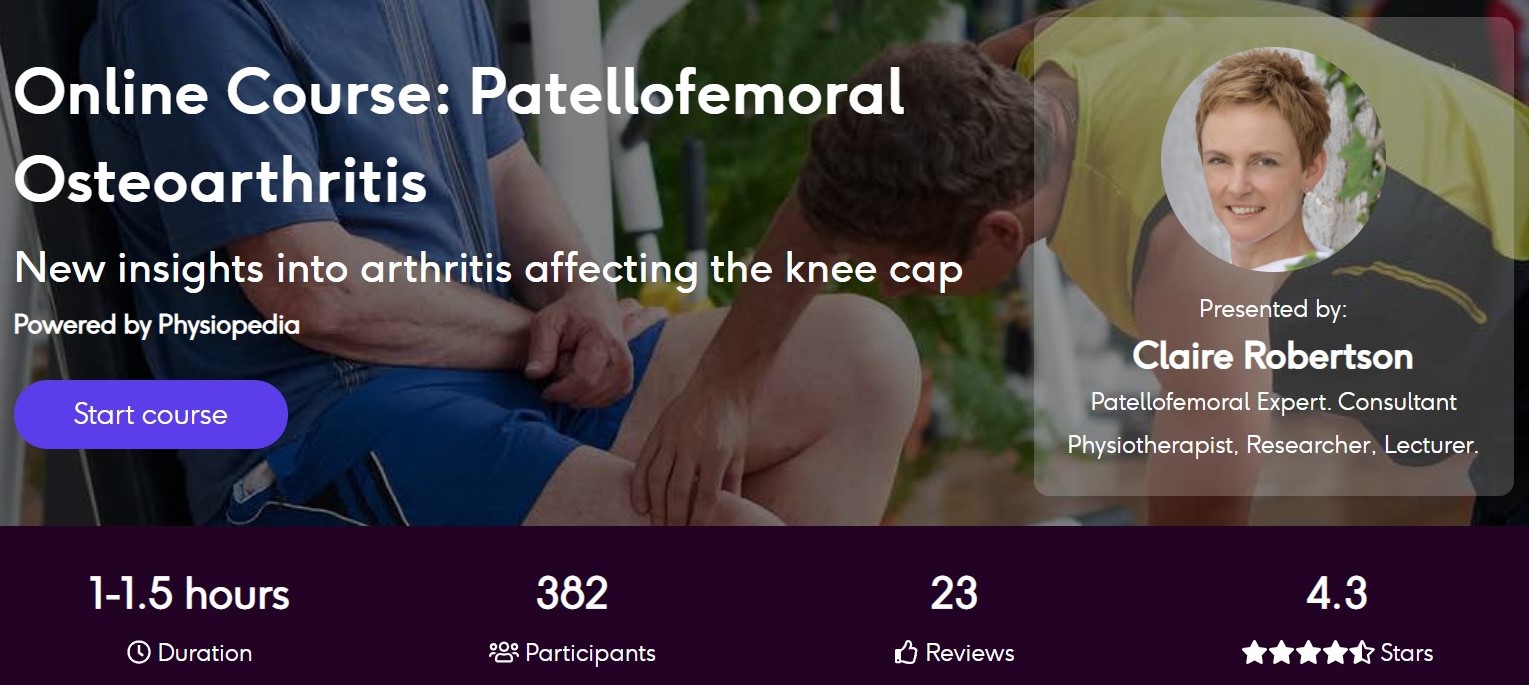There is overwhelming evidence to suggest that exercise is the most effective treatment tool at physiotherapists disposal when it comes to managing knee osteoarthritis. But can manual therapy play a role in treatment too?
Osteoarthritis is the most common chronic condition of the joints and most commonly occurrs in the knees and hips. This is reflected in the fact that OA in these joints is expected to be the 9th leading cause of years lived with disability by 2030.
Discover New Insights into PFJ OA
Manual therapy is one of the treatment tools commonly used by physiotherapists however for osteoarthritis of the knee it is used far less commonly due to evidence suggesting exercise is the most effective treatment choice.
This doesn’t stop manual therapy being commonly advocated for by clinicians and patient alike. But should we still be using it for managing OA? A new systematic review published in Medicina (Kaunas) aims to clarifiy the situation.
The aim of the systematic review was to evaluate the short-and long-term efficacy of manual therapy in patients with knee OA in terms of decreasing pain and improving knee range of motion (ROM) and functionality.
Methods
This systematic review was not registered with PROSPERO meaning there is potential reporting and publication bias within search and review process. This review, however, did adhere to PRISMA guidance.
PubMed, PEDro and CENTRAL were the databases used for the search with articles being eligible if they were RCTs investigating manual therapy involving patients of any age with clinically diagnosed OA in one knee.
Studies were excluded if they investigated OA in both knees or used a mixed population, as in, those with and without knee arthritis. The following key words were used for the search:
The keywords used were ‘knee OA’, ‘knee arthritis’, ‘MT’, ‘mobilisation’, ‘ROM’ and ‘WOMAC’.
In all included studies, an exercise programme was applied in all groups of participants this is important to be aware as this influences and potentially inflates the benefits of using manual therapy.
The quality and bias of included studies was assessed using the Cochrane Manual for Systematic Review of Interventions. Outcome measures used included ROM, pain, WOMAC, sensation and overall function.
Results & Clinical Implications
In total six studies were included within the systematic review with their methodological quality being rated overall as poor with a high risk of bias with only two studies being of sufficient quality, a study by Abbott et al and Mutlu et al. The rest were poor or very poor meaning there are clear limitations to the applicability of the results.
Furthermore only two studies included a control group with one of the control group sizes being 1/3 smaller (n=17) than the intervention group which again rasies serious questions about the applicability of the outcome of this systematic review.
The number of participants varied greatly between studies (n=40-300) with a gender imbalance towards women. Intervention duration also varied between 2-24 weeks with follow-up time ranging from 2-12 months with some not having follow-up at all.
The highest quality study included within the review evaluated MWM or PJM or electrotherapy combined with exercise which showed that if you’re going to combine anything with exercise for OA knee don’t make it electrotherapy. Both MWM and PJM outperformed electrotherapy however there was no control group. With the treatment effect being minimal it suggests MWMs or PJM didn’t significantly improve pain or function.
Across the rest of the studies the treatment effects, which can only be suggested to have come from manual therapy, show some short term improvement in pain and ROM however the duration of these effects is difficult to estimate.
It goes without saying that it is best to continue to adhere to best practice guidelines and use exercise as the primary treatment for knee osteoarthritis. If pain is difficult to control then it is worth considering manual therapy however what about using hydrotherapy instead?
